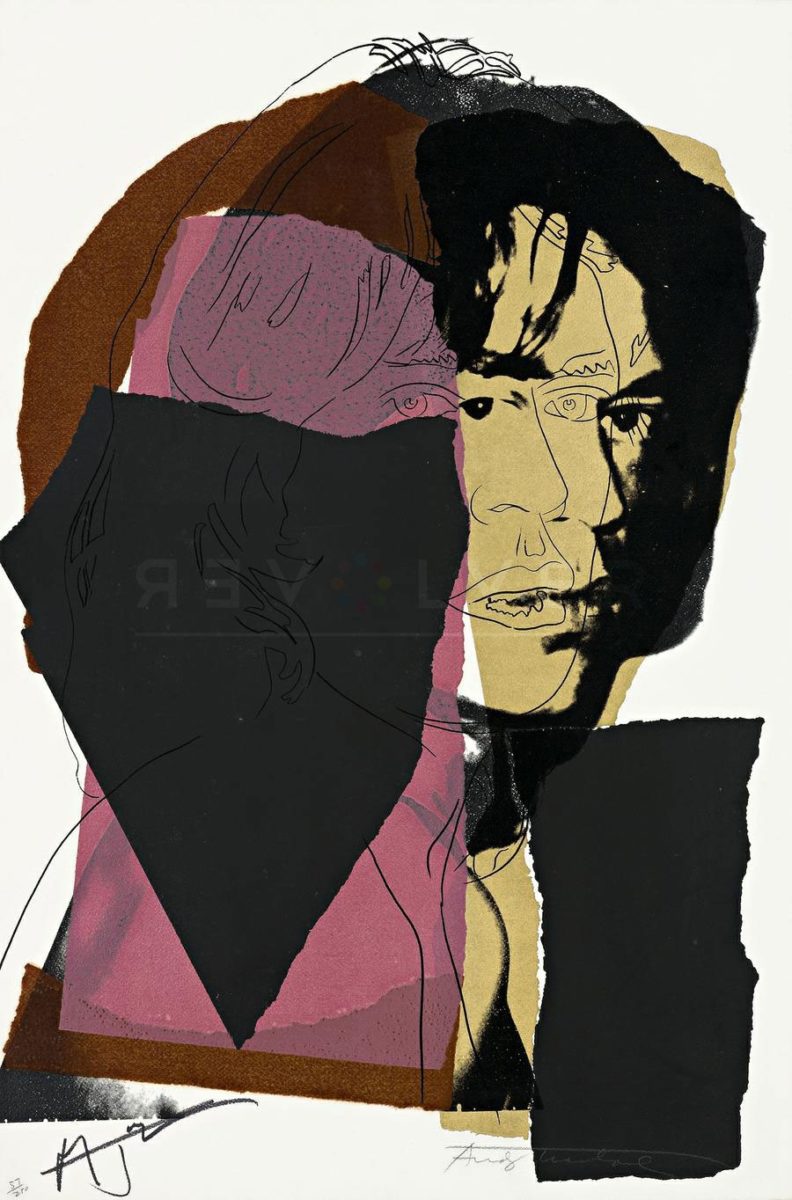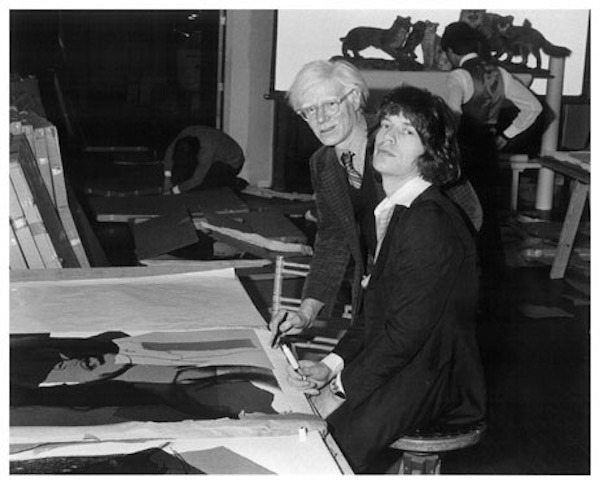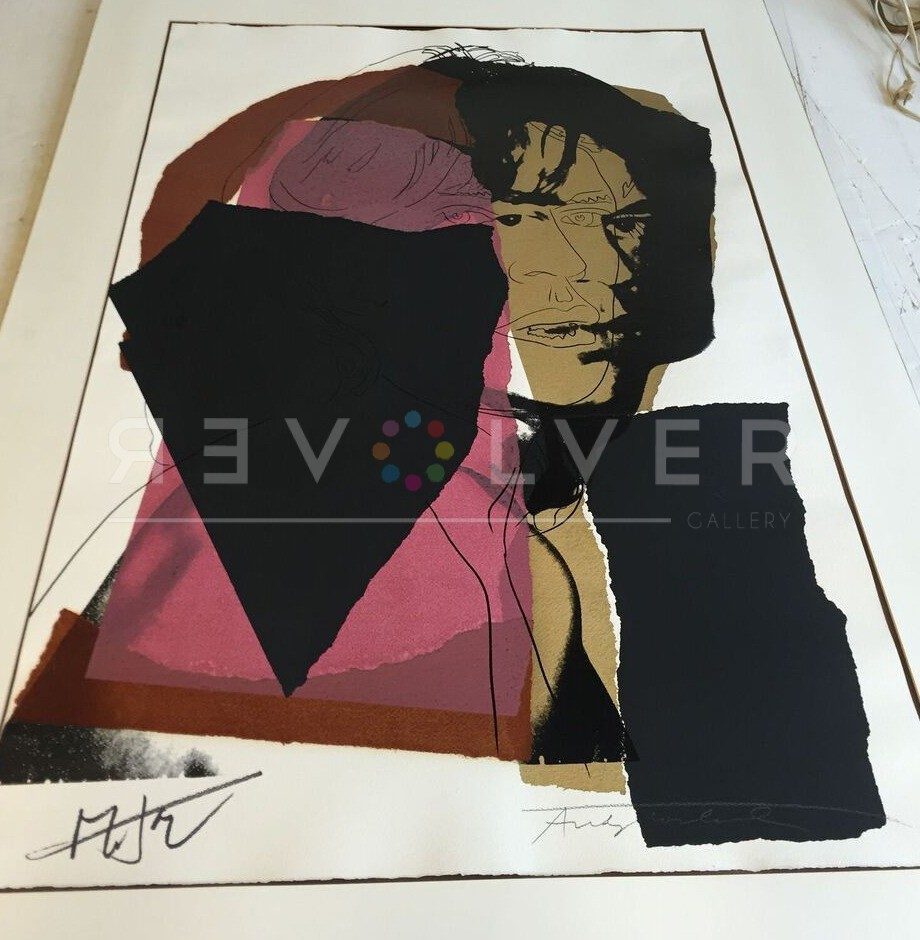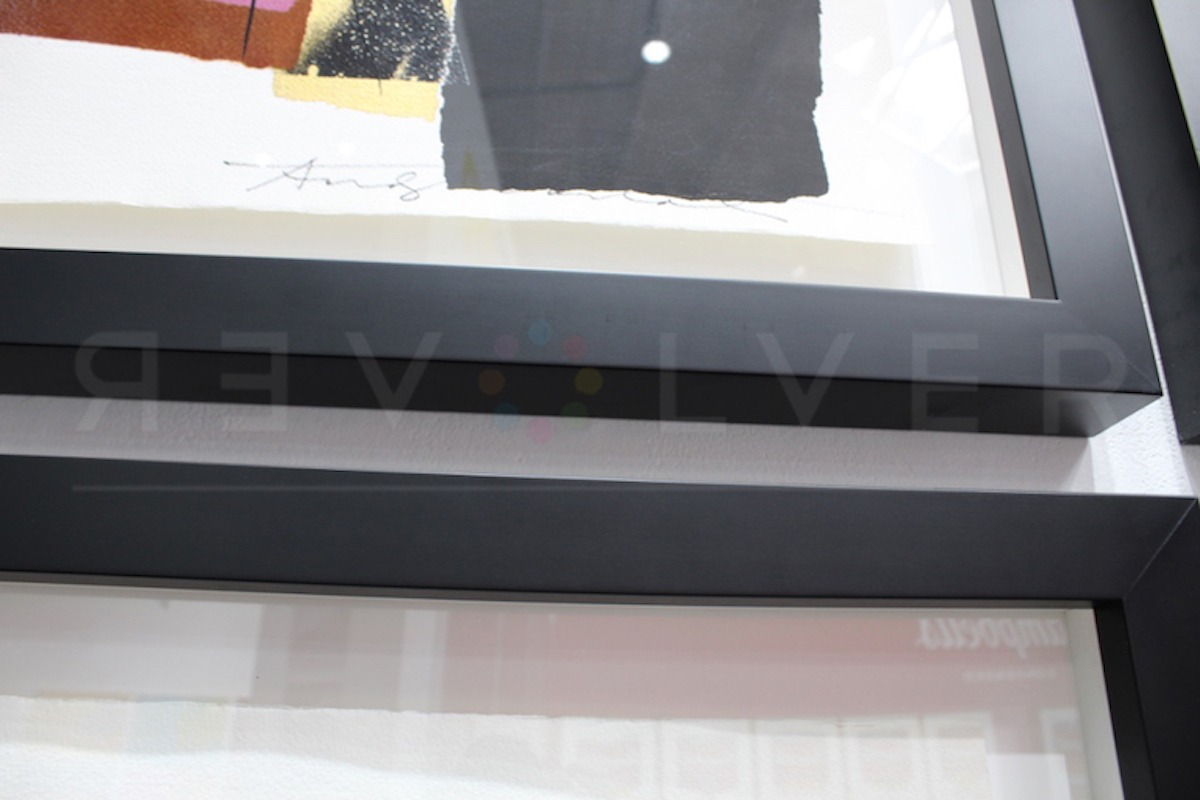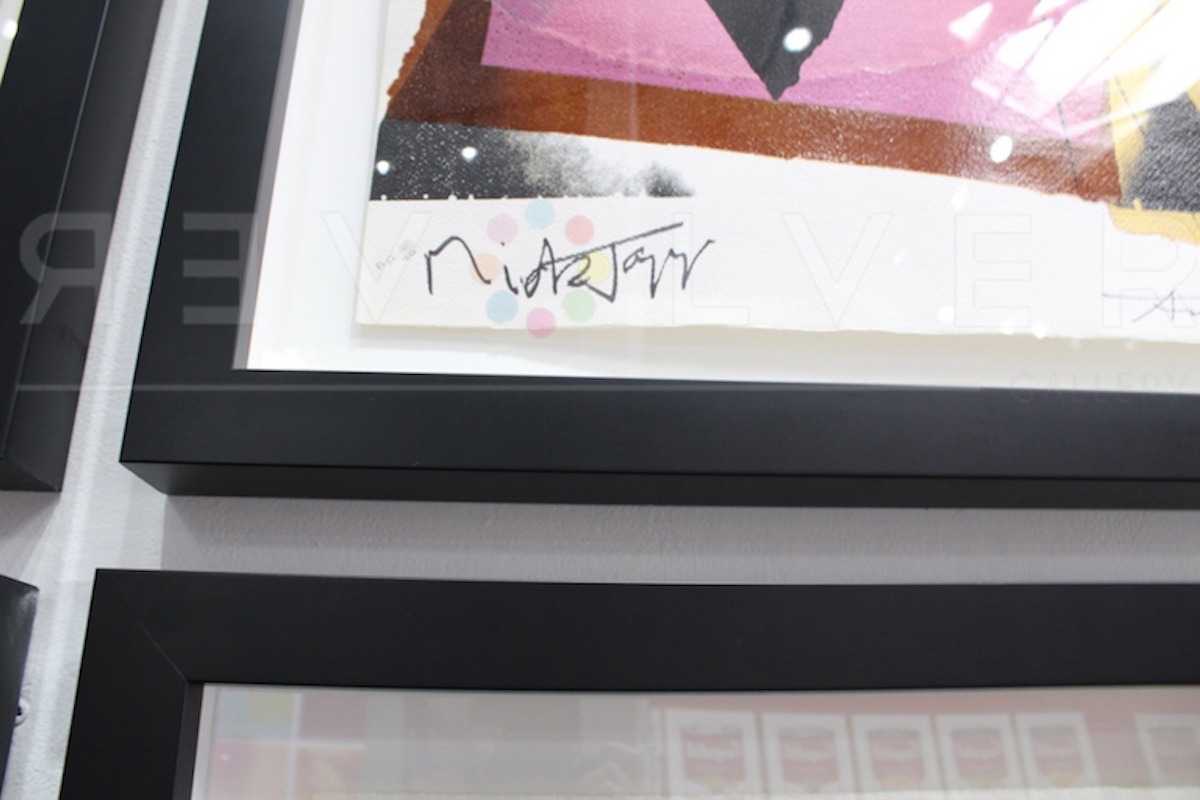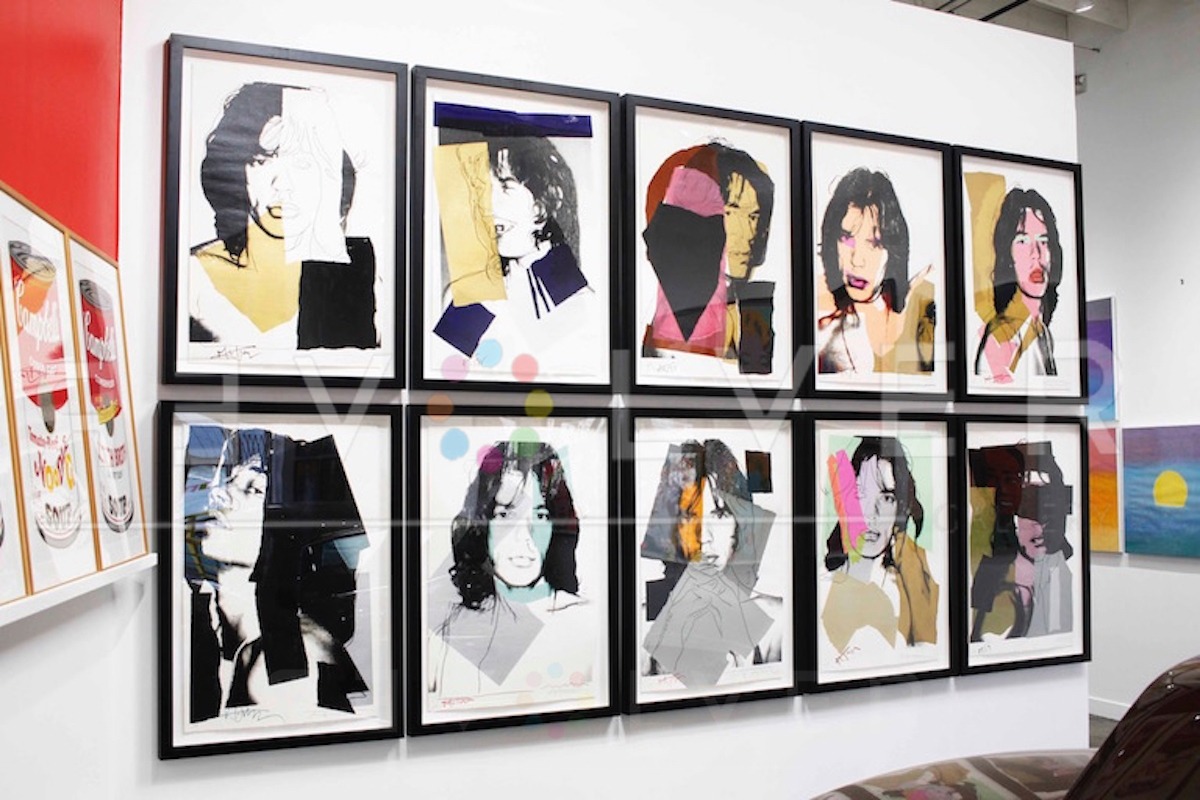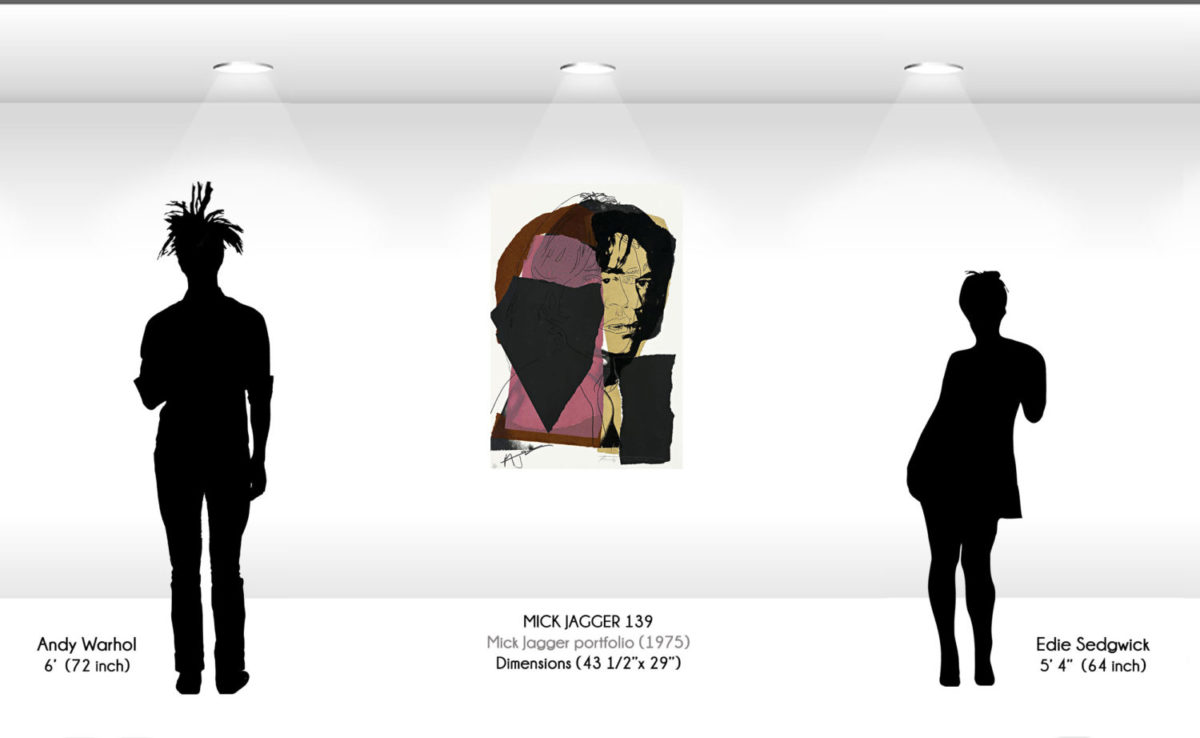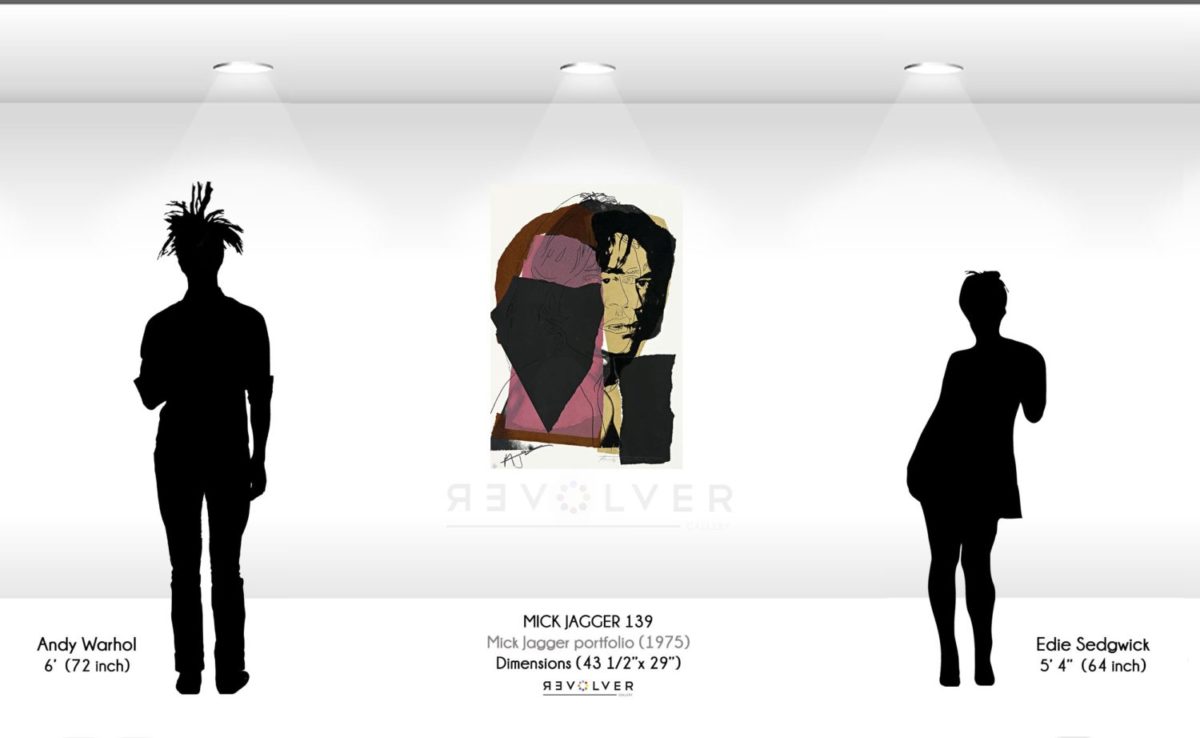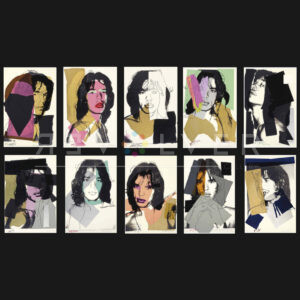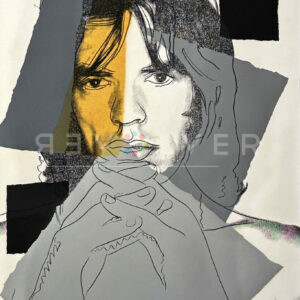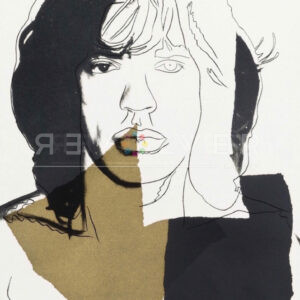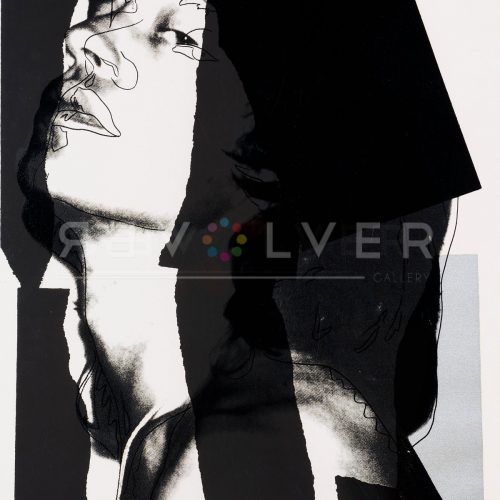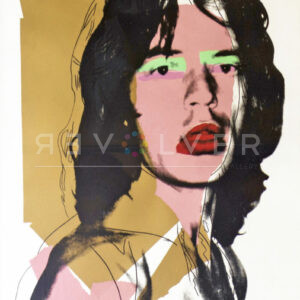Mick Jagger 139 by Andy Warhol is a screenprint from the artist’s iconic Mick Jagger portfolio (1975). The series presents the rock star from several vantage points. The idea of stardom had captured Warhol’s attention from a young age, when he first glimpsed Hollywood celebrities in magazines. It would continue to be a major force in his art throughout his life. He was fascinated with the way celebrities invented themselves, crafting and molding their own images. His utilization of color, line sketches, and screen prints in this series was key to mining the complex nature of celebrity. Mick Jagger 139 uses these collage elements to convey Jagger’s multiplicity. Additionally, the piece exhibits what Warhol did best: observe popular culture with a keen eye, then turn it back on the viewer to digest from a new perspective.
Warhol paid close attention to Jagger after they met at a party in the 1960’s. Though he would gain worldwide fame with the Rolling Stones, Jagger himself became a symbol of youthful rebellion. Of course, Warhol was unsurprised by his ascent to stardom. In the 1979 book Exposures, he explained Jagger’s mass appeal: “1) He’s very talented; 2) He’s very intelligent; 3) He’s very handsome; 4) He’s very adorable; 5) He’s a great business person; 6) He’s a great movie star; 7) I like his fake cockney accent… Image is so important to rock stars.” He understood that Jagger was a force to be reckoned with, onstage and off, because he had mastered his public image.
Like Elvis before him, Jagger became the face of rock and roll in the 1970’s. He also reinvented it for a new sexually liberated generation. Further, his choice to turn to Warhol for the cover of The Rolling Stones’ 1971 album Sticky Fingers was a clever move that would set the stage for their future collaboration. The eroticized album cover featuring a man in a tight pair of Levi’s was a massive success. Four years later, the Stones visited Warhol’s Montauk home to rehearse for a tour. Here at his “Summer Factory” Andy often hosted celebrities like Truman Capote, Liza Minelli, Keith Haring and the Kennedys. While rehearsing and maneuvering hordes of fans that came to Montauk to catch a glimpse of the Stones at work, Jagger permitted Andy to take several Polaroid shots of him.
Mick Jagger 139 employs intense shades of black, maroon, gold and deep pink to frame Jagger’s features. The placement of the line drawing creates a three-dimensional effect, emphasizing the magnitude of Jagger’s character. The image is kaleidoscopic and illusory, leading the viewer’s eye multiple places at the same time. While the sketched version of Jagger looks to one side, the photographed version looks to the other. Consequently, the layers overlap in a way that suggests even Mick may have had a difficult time separating his true self from his carefully crafted image. Mick Jagger 139 is a paramount example of Warhol at his most cunning, and most creative moment.

